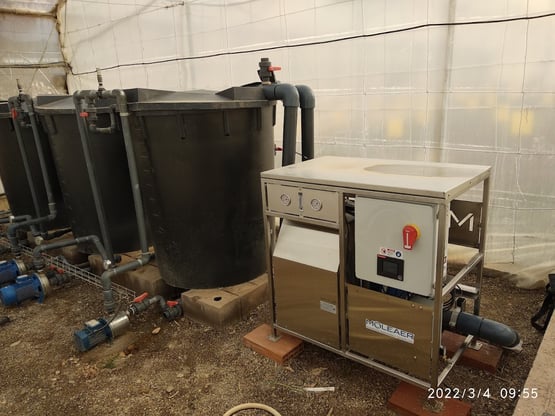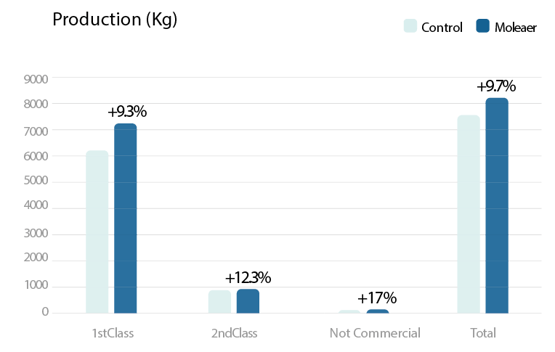Biosabor, a distributor of Moleaer’s nanobubble technology in Spain, together with Agrocolor SL, studied the effects of nanobubble-enriched irrigation water on greenhouse tomatoes grown in native soil. Agrocolor SL is a leading organization in agri-food audits and certifications and has its own department for research, development and testing.

Moleaer’s nanobubble technology delivers efficient, stable dissolved oxygen (DO) and high concentrations of electrochemically charged nanobubbles that alter the properties of water to deliver multiple benefits.
The technology produces elevated levels of DO economically and with the most stability of any oxygenation technology to create optimal water conditions for developing healthy roots, promoting a healthy microbiome in the soil and improving crop resilience to environmental stressors like drought and heat.
Nanobubbles produced by Moleaer’s technology help reduce the surface tension of water, aiding in soil infiltration and the mobility of nutrients to get water and nutrients to the root zone more effectively.
Better capillary root mass results in more efficient nutrient uptake, allowing for improved fruit size without sacrificing nutrient content or brix. This was validated in a recent study by NovaCropControl on greenhouse peppers, irrigating with nanobubble-enriched irrigation water. The study concluded that nanobubbles improved root mass by 25%, which lead to a 30% increase in 1st-class fruit.
Another study published in the Journal of Agricultural and Food Chemistry validated that nanobubble oxygenation increased crop yield for tomatoes by 23%.
In addition to these benefits, nanobubbles also help to reduce water-borne pathogens and scour biofilm from irrigation systems without the use of chemicals, lowering disease pressure on the crops and keeping irrigation systems cleaner.
All these benefits help growers see better-quality crops, often reducing inputs and increasing crop production.
To test these benefits in the greenhouse, Biosabor and Agrocolor compared tomato crops grown with nanobubble-enriched irrigation water to crops grown with untreated irrigation water.
The levels of dissolved oxygen in the irrigation water were measured with an oximeter at the drippers throughout the growing cycle. On average the nanobubble-enriched irrigation water had a higher, more stable DO concentration than the control, with an average of 20.77 ppm and 6.30 ppm respectively.

The tomato crops irrigated with nanobubble-enriched water had increased production by 9.7% compared to the control.

The fruit was also larger in diameter by 3.8% and had a heavier average fruit weight by 8.4%. Tomatoes were identified by their quality in three main categories: 1st class, 2nd class and low or not commercial quality. When analyzed by fruit category, the area irrigated with oxygen nanobubble-enriched water obtained 9.3% more fruit in the 1st category, 12.3% more in the 2nd and 17% more in the lower quality category.

By improving root zone conditions with Moleaer’s nanobubble technology, growers worldwide can increase production and profitability. Oxygen nanobubbles are enabling growers to produce more abundant and better-quality crops.